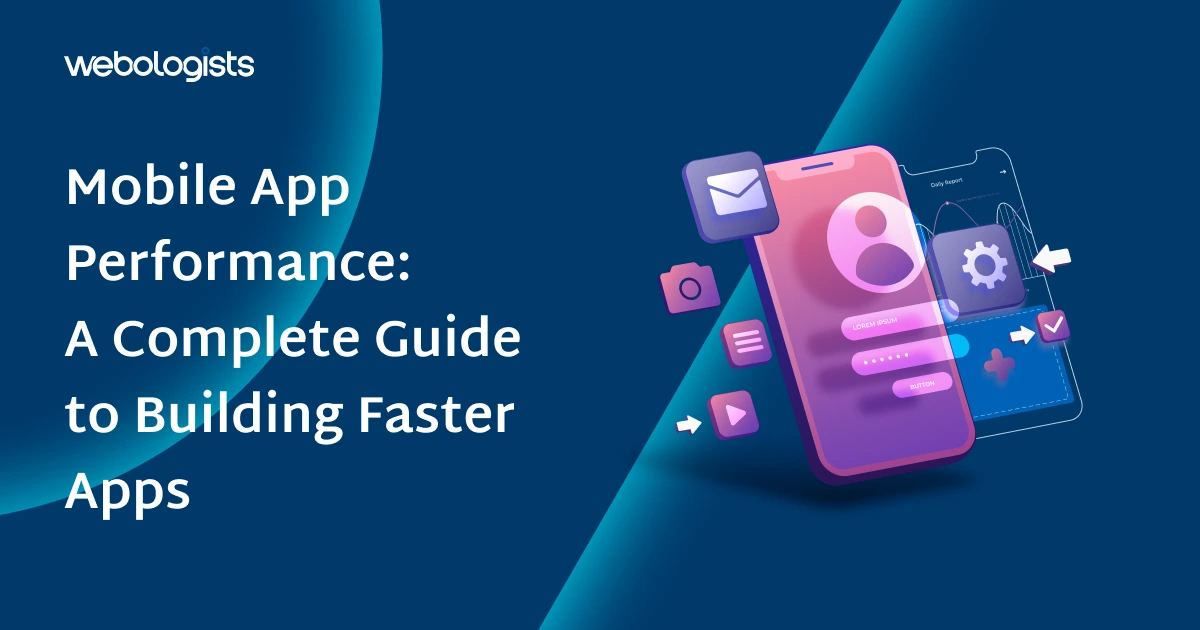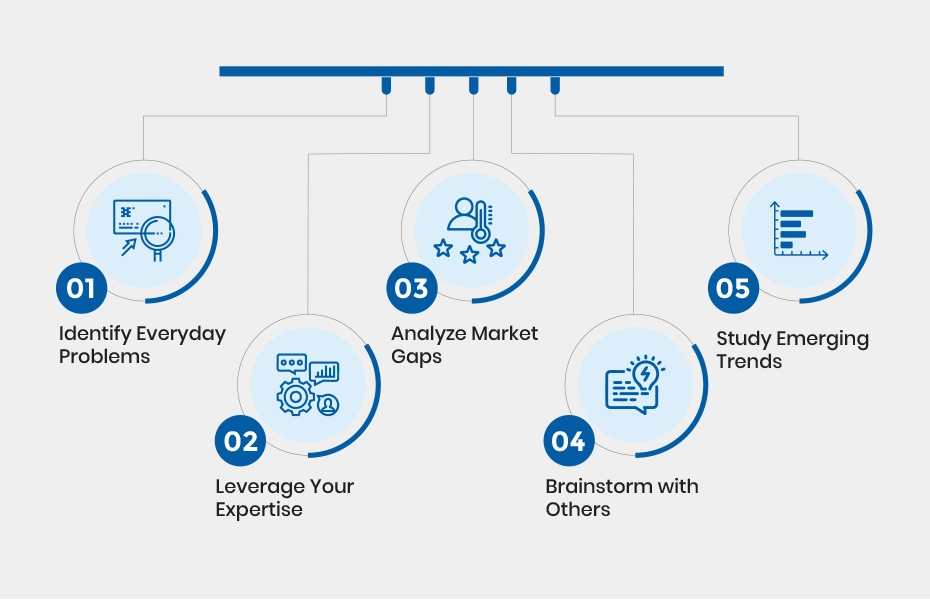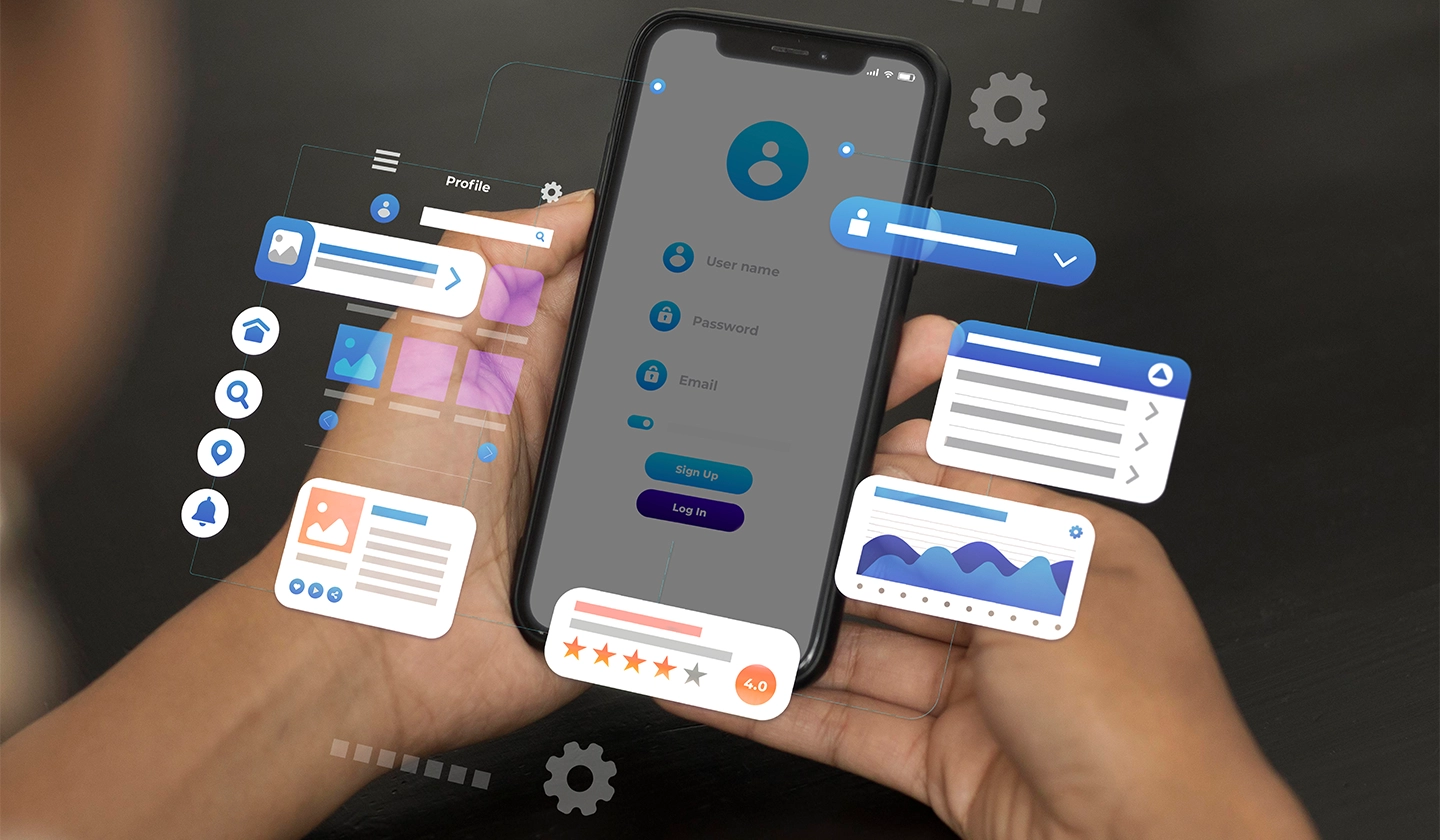
Turning your app idea into a functional product is an exciting journey, but rushing into development without validation can lead to costly mistakes. By validating your idea early, you’ll minimize risks and maximize your chances of success.
In this blog, we will guide you on how to validate your app idea through essential stages, from developing and refining your concept to evaluating its performance before launch.
Let’s get started!
Table of Contents
- 1 How to Come Up with App Ideas
- 2 The Seven Stages of Validating a Mobile App Idea
- 2.1 Identifying and Refining Your App Idea
- 2.2 Researching the Feasibility of Your Concept
- 2.3 Conducting an In-Depth Market Analysis
- 2.4 Developing a Complete Digital Prototype for User Testing
- 2.5 Finalizing the Design with User Feedback
- 2.6 Building a Minimum Viable Product
- 2.7 Evaluating App Performance Before Launch
- 3 How to Validate your App Idea Before Launching
- 4 Why Startups Need to Validate Their Ideas
How to Come Up with App Ideas
Before getting into the whole validation process, it’s important to start with a strong app idea. If you’re struggling to come up with one, here are some strategies to spark inspiration:
- Identify Everyday Problems: Pay attention to the challenges you face in daily life or observe issues others encounter. Could an app provide a solution?
- Leverage Your Expertise: Consider your skills, hobbies, or professional experience. How could you use them to create a valuable app?
- Analyze Market Gaps: Research existing apps in your area of interest and look for gaps or unmet needs.
- Brainstorm with Others: Collaborate with friends, colleagues, or mentors to generate innovative ideas.
- Study Emerging Trends: Stay updated on technological advancements and societal shifts to identify new opportunities.

The Seven Stages of Validating a Mobile App Idea
You need to follow a structured approach to ensure your app idea has the potential to succeed. Here are seven key stages that will help you validate app ideas, refine concepts, and prepare for development with confidence.
Identifying and Refining Your App Idea
The first step is to define your app’s purpose clearly. Ask yourself the following questions:
- What problem does my app solve?
- Who is my target audience?
- Why would users choose my app over existing solutions?
Start by brainstorming a list of features and functionalities you’d like to include. Then, narrow it down to the core value your app offers. Remember, simplicity is key. Once you’ve refined your idea, draft a value proposition statement communicating your app’s purpose and benefits.
Researching the Feasibility of Your Concept
Assessing the feasibility of your new app idea involves examining both technical and financial considerations. Here’s how to do it:
- Technical Feasibility: Consult developers or technical experts to determine whether your idea is achievable with current technology and identify any potential challenges or limitations.
- Financial Feasibility: Estimate the development cost, including design, coding, marketing, and maintenance. Compare this with your available budget and explore funding options if needed.
Conducting an In-Depth Market Analysis
Market analysis involves understanding the competitive landscape and identifying opportunities for differentiation. Follow these steps:
- Identify Competitors: Research apps similar to yours. Analyze their features, user reviews, and market positioning.
- Understand Your Target Audience: Use surveys, focus groups, or online forums to gather insights into your audience’s preferences, pain points, and expectations.
- Analyze Market Trends: Tools like Google Trends, App Annie, and Sensor Tower can help you identify emerging trends and potential gaps in the market.
Developing a Complete Digital Prototype for User Testing
A digital prototype is an interactive model of your app’s design and functionality. Creating a prototype offers several benefits, like:
- Visualizing Your Idea: Stakeholders and potential users can better understand your concept.
- Facilitating User Testing: Observe how users interact with the prototype to identify usability issues.
- Saving Time and Money: Prototyping helps you catch design flaws early, reducing costly revisions later.
Tools like Figma, Adobe XD, or Sketch are excellent for building prototypes. They can also help create an intuitive, user-friendly design.
Finalizing the Design with User Feedback
After testing your prototype, gather user feedback to identify areas for improvement. Consider the following:
- Usability: Are users able to navigate the app easily?
- Aesthetics: Does the design appeal to your target audience?
- Functionality: Are there any missing or confusing features?
Incorporate this feedback into your design and iterate until your app meets user expectations. This process, which values user feedback, ensures your app is polished and you are ready to build an MVP.
Building a Minimum Viable Product
An MVP is a simplified version of your app that includes only its core features. Building an MVP allows you to:
- Test your app concept with real users.
- Gather valuable feedback on usability and functionality.
- Avoid wasting resources on unnecessary features.
You can use the feedback from your MVP to make data-driven decisions about future development. Remember, the goal is to deliver value while keeping costs low. Once the MVP passes testing, you’re set to develop your mobile app idea into a fully functioning application.
Evaluating App Performance Before Launch
Before launching your app, conduct thorough testing to ensure it performs as expected. Key areas to evaluate include:
- Functionality: Test every feature to ensure it works seamlessly.
- Compatibility: Verify the app functions correctly across different devices and operating systems.
- Performance: Monitor load times, responsiveness, and stability.
- Beta Testing: Release your app to a small group of users to gather feedback and address any issues.
By addressing these factors, you’ll reduce the risk of negative reviews and user frustration post-launch.
How to Validate your App Idea Before Launching
After completing the foundational stages, take these extra steps to refine and prepare your app for a successful launch.
Exploring and Testing Monetization Strategies
Select the right monetization strategy to align with your audience and business goals. Consider these options:
- Freemium Model: Offer essential features for free while providing advanced content or functionality as paid options. This approach works well for attracting a broad user base.
- Subscriptions: Create recurring revenue by offering tiered subscription plans with exclusive features. Popular for apps offering continuous value, such as content platforms or fitness trackers.
- In-App Purchases: Sell virtual goods, additional functionalities, or consumables directly within the app. Games and utility apps frequently use this model.
- Ads: Incorporate advertisements strategically to generate revenue while keeping the app free for users. Be cautious to avoid disrupting the user experience.
Test these strategies on a small scale using A/B testing or pilot programs. You can also collect detailed metrics to evaluate their effectiveness in generating revenue and their impact on user retention and satisfaction.
Outlining Team and Resources
A strong foundation ensures smooth development and execution. Identify these key elements:
- Core Team: Assemble skilled professionals, including app developers, UX/UI designers, digital marketers, and project managers, with relevant experience.
- Technical Resources: Invest in robust tools such as project management platforms (e.g., Jira or Trello), cloud storage solutions, and analytics software to streamline development and track performance.
- Budget Planning: Allocate sufficient resources for design, development, marketing campaigns, hosting, and post-launch maintenance. Establishing a contingency fund is advisable.
Regular team collaboration and efficient resource allocation help mitigate potential roadblocks and ensure deadlines are met effectively. You can also conduct periodic reviews to adapt resource allocation based on the project’s evolving needs.
Crafting a Go-to-Market Strategy
An effective go-to-market (GTM) strategy maximizes your app’s visibility and user adoption. Plan with these phases:
- Pre-Launch: Build anticipation with teaser campaigns, early-access invitations, and influencer endorsements. Create an email list and use social media to generate buzz. Gather initial feedback from exclusive access groups to refine the app further.
- Launch Day: Optimize your app store presence with engaging visuals, detailed descriptions, and ASO (App Store Optimization). Consider hosting live promotional events or partnering with relevant brands to expand reach. Timing your launch to coincide with relevant industry events or trends can amplify visibility.
- Post-Launch: Engage users with timely updates, prompt responses to feedback, and consistent social media activity. Offering limited-time promotions or exclusive content can drive user interest. Leverage app analytics to identify areas for improvement and adapt strategies accordingly.
A well-executed GTM strategy not only ensures strong initial traction but also sustains user interest and drives long-term growth. By carefully planning each phase, you create a roadmap for success that keeps your app relevant and competitive in an ever-evolving market.
Developing an Onboarding Plan
A seamless onboarding experience is crucial for retaining users and maximizing app adoption. Focus on:
- Interactive Tutorials: Use engaging step-by-step guides to showcase key features and functionality without overwhelming users.
- Simplified Account Creation: Offer quick and easy sign-up options, such as social media login or email authentication, to reduce friction.
- Progress Indicators: Include visual progress bars or tooltips to help users navigate and understand your app.
- Personalized Experiences: Customize the onboarding journey based on user preferences and behavior to enhance engagement.
- Retention Strategies: Integrate gamified elements, such as rewards or achievements during onboarding, to increase user engagement and encourage continued app exploration.
A well-designed onboarding process helps users recognize your app’s value quickly, ensuring a positive first impression. By streamlining the user journey, you foster satisfaction, engagement, and long-term retention. So, a strong onboarding strategy not only improves user understanding but also reduces churn rates, creating a solid foundation for sustained app growth.
Why Startups Need to Validate Their Ideas
For startups, validating an idea isn’t optional—it’s essential. Without it, you risk wasting time and resources building an app no one wants. Here’s why it’s so important:
- Reduces Financial Risk: Development costs can quickly add up. Validating your idea ensures you’re investing in a product with real potential.
- Confirms Market Demand: By testing your concept, you’ll verify whether there’s an audience willing to pay for your app.
- Refines Your Idea: Validation helps you identify areas for improvement, ensuring your app delivers maximum value.
- Builds Investor Confidence: A validated app idea is far more attractive to potential investors, as it demonstrates careful planning and research.
To sum it up!
Validating your app idea is a crucial step that saves time, money, and effort. By following these structured steps, you can confidently move forward with development, knowing your idea has a solid foundation and genuine market potential.
Remember, your app’s success depends on validation—don’t skip this essential phase!
Want to turn your validated app idea into reality? Partner with a trusted web app development company like ours to bring your vision to life with expert design, development, and launch strategies.
Get in touch today to start building a market-ready app!




